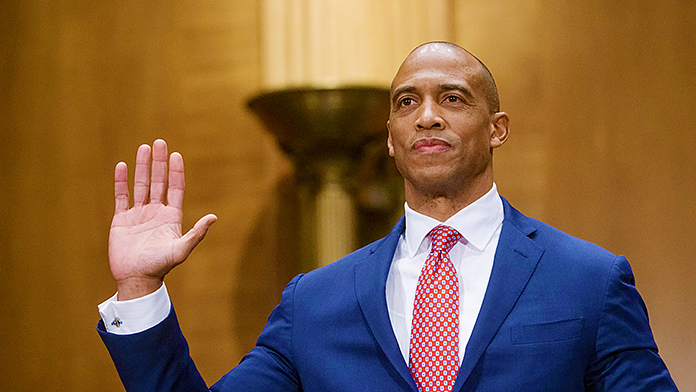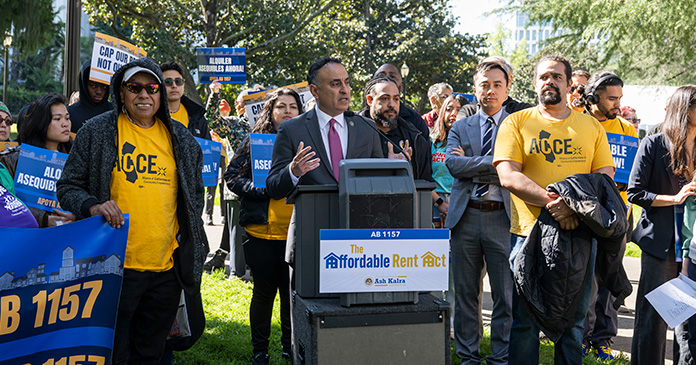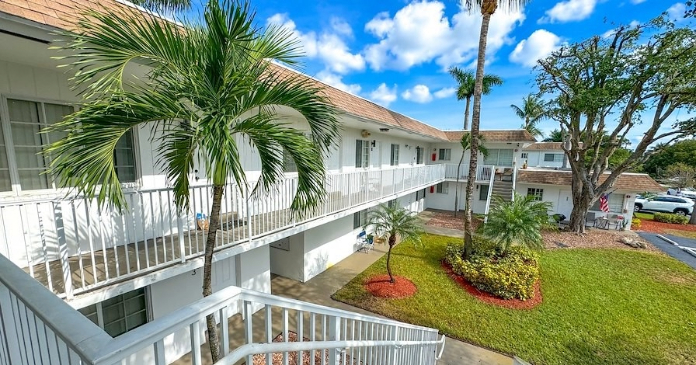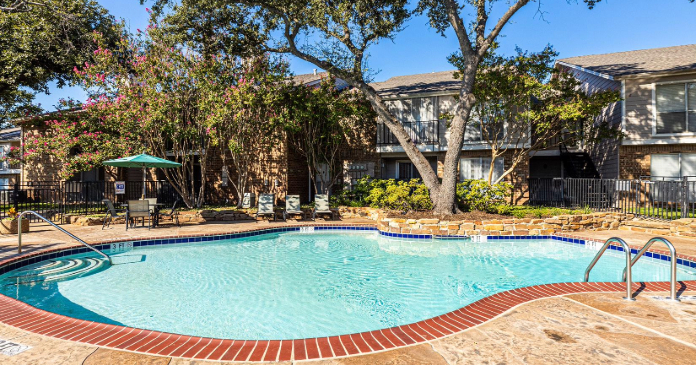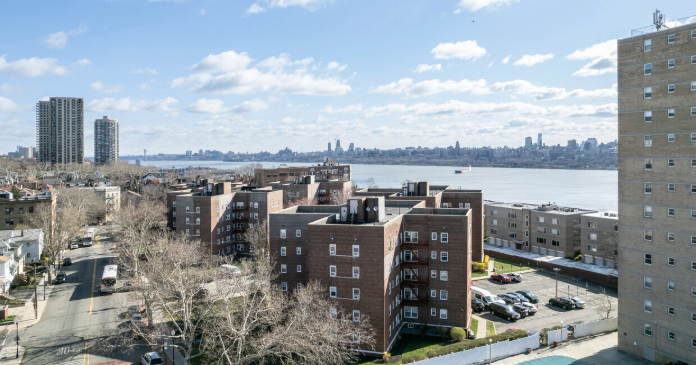Marketing. When valuing an apartment,
consider the best possible price for its location, amenities and design. “However, that
may not necessarily mean the highest price
in the market,” points out Donald Davidoff,
group vice president, pricing and revenue
management for Archstone-Smith. To make
sure you’re getting top dollar, don’t low ball
and “give the unit away,” says Nevitt-Casey.
Davidoff agrees.
A community may be at 100% occupancy
because of its lower-priced units, but that
may mean you’ve closed it off to those willing
to pay more. On the other hand, if a unit
priced too high, prospects may be put off
before you’ve had an opportunity to relate
value to price.
Rents are fluid as they’re affected almost
daily by supply and demand. Many firms
evaluate rents at least daily, to effectively
follow the market and keep rents aligned
with ebbs and flows.
Several software programs on the market
will analyze a property’s activity by virtue of
its’ current rents, unit turnover and a final
calculation of absorption. It will then analyze
and set apartment rents on any schedule,
whether daily or weekly. One such program,
YieldStar, was developed by Nevitt
Casey and purchased by RealPage.
Archstone-Smith created its own proprietary
software called Lease Rent Options,
also on the market.
“Both analyze supply and demand for a
particular unit on a given day to reach a
price for the apartment,” states Davidoff.
The benefits to this kind of automation are
plentiful. “Lots of communities claim to
have a manager who’s great at pricing, but
the prices are based on instinct,” says
Davidoff. Many times people undervalue
units fearing they’re pricing an apartment
too aggressively. “Automation brings discipline
to the concept of apartment pricing,”
says Davidoff.
Because the system runs on information
compiled daily from a community’s property
management software, it reacts quickly to a
softening market. This might be gleaned
from a lack of guest cards or a slow-down in
leases. The system will then automatically
lowers prices. “It reacts just as quickly to a
hot market, such as if the system detects
vacancies being filled almost as soon as
they’re posted,” Davidoff explains.
“Since Archstone-Smith rolled out its
pricing software, it has seen a consistent
increase in revenue that easily justifies its
cost,” says Davidoff. “Other industries that
use pricing software, including airlines and
hotels, boast a 4 to 8% increase in annual
revenue. With a daily rent review, most
owners receive 5% additional NOI over the
year prior.”
Mostly larger companies like Archstone-
Smith and Equity Residential are able to
leverage the price of an automated system.
Still, some companies are leery of taking
pricing out of human hands and prefer to do
it manually. Typically, managers change prices on their own schedule by creating
spreadsheets based on the same formulas the
automated program uses.
BEST FOOT FORWARD
Shop leasing consultants at least quarterly,
Cindy Shepardson, VP of operations for
Western National Property Management
advises. Western National also shops new
hires within three or four weeks of their initial
training to assure they get started on the
right track. “Shopping provides an objective
view of leasing staff skills. It identifies where
additional training is needed or identifies
consultants whose performance exceeds
expectations,” says Shepardson.
The backbone of the industry has traditionally
been the mystery shop. There are
now more high tech alternatives that can
effectively take a pulse on your leasing
team’s skills.
“The most accurate way to evaluate an
individual’s phone leasing skills is to listen
to an actual conversation with a prospect,”
says Doug Chasick, senior vice president of
professional services for CallSource. “Calls
can then be evaluated in real time, under
real conditions, without compromising the
results by a shopper who’s trying to coax the
leasing professional to answer the questions
he or she is required to ask,” he asserts. If a
manager doesn’t have the time to listen to
calls, there are also companies that review
calls and provide a written analysis of how a
leasing representative performs, as well as recommended areas of improvement. The
number of calls analyzed and the fact that
the conversation is an authentic leasing call
versus a staged shop, gives a more accurate
read of a consultant’s abilities. Chasick’s
company, CallSource, offers such a service
called Telephone Performance Analysis.
The real value in any of these products is
using the results to propel improvement.
Evaluating team performance, followed by
appropriate training can increase closing
ratios which directly affect the bottom line.
YOU GET WHAT YOU PAY FOR
The industry standard is that leasing consultants
earn commission for filling vacancies.
Yet, once an apartment is vacant, it’s
already losing money. Encourage staff to fill
apartments before they are vacated, or pre-lease.
Nevitt Casey suggests awarding higher
commissions to leasing consultants who
pre-lease, aspiring to a five day turnover
(where new residents take possession within
five days of move-out.) This may also include incentivizing maintenance teams to turnover apartments quickly. “If you find that your lease termination notice provisions aren’t giving leasing staff enough time to pre-lease in your market, consider changing your notice to vacate requirement from 30 to 60 days,” suggests Nevitt Casey.
OUTSOURCE: CALL CENTER
Many are familiar with the concept of call
centers. While it’s become a source of contention
by virtue of unnervingly poor service and outsourcing abroad, when a call center is done correctly, it slips by literally undetected.
Most managers are familiar with rolling the phones over after hours.(note: the difference between a call center and an answering service is that a center is manned by staff who are trained to lease.)An after hours call center is a great way to capture calls and prospective leases in real time.
Call centers can also pick up calls at high
volume times of the day, or when staff is
busy with prospects in the office, leaving
leasing staff to focus on customer service.
“There’s no question that call centers
take a lot of stress off the leasing consultant,”
says Dan Coen, director of call centers
for CallSource. “In a typical leasing office,
an employee may be speaking with a resident
and setting up an appointment for a
site visit simultaneously,” he adds. A ringing
phone or a new email alert can easily go
unanswered. Many management companies
are determining that call centers can be the
answer to low call conversion rates and
even lower email conversion rates.
According to industry statistics quoted by
RealPage at their annual conference, up to
40% of calls go unanswered at a typical
apartment community and up to 60% of
prospect emails go unanswered. When
phone calls are answered, the average length
of the call is 2.5 minutes. Yet a study of shopping customers done by Joanna Ellis of Ellis
Property Management Services, shows that
the more time a leasing consultant spends on
the phone or in person with a prospect, the
higher the likelihood the shopper will set an
appointment or sign a lease. “The average
length of a leasing inquiry call taken by a call
center is 10 minutes,” says Coen. In the Ellis
study, a ten minute phone conversation
translated into 90.5% of the callers setting
an appointment to visit the property.
The math is simple. If a call center saves a
few leases a year that would have otherwise
been missed, it’s already paid for itself.
THE FUTURE IS NOW
To keep an apartment community running
at its most profitable, rent checks must flow.
That means, if someone is moving out, you
need to be reasonably well prepared to move
a new person in pronto. But if you live in a
region where your rental market seasonally
slows, there are certain times of year — like
winter in the North East — where it’s just
harder to fill a vacancy. Enter lease expiration
management, the review and control of
lease terms and turnover. Done properly, a
good manager can assure that move-outs
occur outside seasonal lulls.
Lease expiration management is also an
automated component of yield management
software like YieldStar and Lease Rent
Options. Like a good manager, yield management
software considers the inopportune
periods for a lease to expire and then puts a
premium on the cost of rent for those leases.
You don’t need software to practice lease
expiration management. Simply track current
lease terms calendaring when they
expire. Flexible lease terms are sometimes
an attractive feature for residents. They’re
even better when you’re not stuck with
vacancies when most people are out holiday
shopping.
KEEP THE SHINE ON THE APPLE
Despite the high-tech influences that have
pervaded property management, the basics
remain tried and true. “We devote a lot of
our leasing budget to making sure we don’t
lose curb appeal and that our vacant apartments
are in top shape for touring
prospects,” says Shepardson. “The best trained
leasing consultant or even the best
price won’t sell a sub-standard apartment,”
she adds.
Take a critical look at your product. Is your
landscaping well-maintained and free of
trash? Is your leasing office clean and updated
and free of bad odors like cigarette smoke?
Are your vacants spotless and shining? Does
your model apartment make people want to
move right in? If you constantly seek to
improve and enhance the quality of your
product, you’ll see the results in your ROI.
Author: MINDY GRILL




